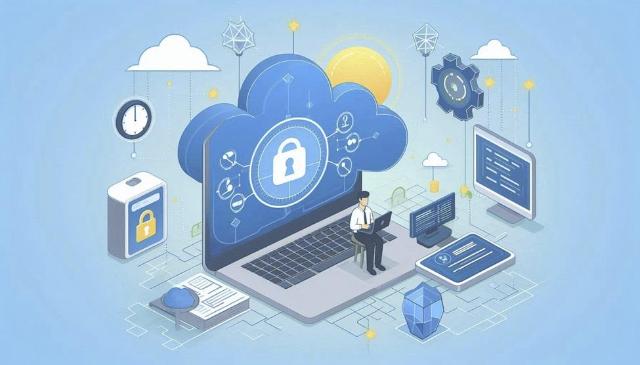5 Cybersecurity Tips for Managing Blockchain in Cloud Environments
Blockchain is reshaping industries by offering transparent and secure transaction processes. When paired with cloud environments, it unlocks even greater scalability.
But this combination introduces risks. Without strong cybersecurity practices, sensitive data becomes vulnerable. Attacks on blockchain-based systems are rising, targeting loopholes in poorly managed setups.
How can you protect your blockchain infrastructure in the cloud? Here are a few lynchpin strategies to implement for this purpose.
Understanding Blockchain Vulnerabilities in Cloud Setups
Blockchain and cloud systems both have unique vulnerabilities. Combined, they create additional risks, such as misconfigured cloud storage or smart contract exploits.
A weak identity management process can open doors for attackers, while shared cloud resources might increase exposure to breaches. Regular audits help identify gaps early.
Understanding legal compliance is key. Consulting with a local blockchain lawyer ensures that your setup adheres to regional regulations, helping to mitigate risks and meet legal standards. A solid grasp of these vulnerabilities helps you build stronger defenses from the start.
Effective Authentication Practices for Secure Access
Authentication is your first line of defense. Weak or outdated methods leave systems exposed to unauthorized access.
Multi-factor authentication (MFA) enhances security by requiring additional verification steps, making it harder for attackers to breach accounts. Using hardware tokens or biometric tools adds even more layers of protection.
Privileged access should be limited to essential users only, reducing the risk of insider threats. Managed cloud service providers in the USA have experience offering built-in identity management tools that integrate well with blockchain platforms, so use them effectively.
The Role of Encryption in Protecting Blockchain Data
Encryption is critical for securing blockchain data within cloud environments. It ensures that even if attackers intercept information, they cannot read it without the decryption key.
To maintain confidentiality, always encrypt data both at rest and in transit. Modern encryption protocols, such as AES-256, offer strong protection against evolving threats.
Cloud providers often include tools for seamless encryption management, so leverage these options to simplify deployment. Regularly update your keys and ensure their secure storage. There are threats to encryption out there, but having it in place is better than ignoring it altogether.
Choosing the Right Monitoring Tools for Your System
Proactive monitoring detects threats before they escalate. Cloud-based blockchain systems need tools designed to identify unusual activity, unauthorized access, or potential vulnerabilities in real time.
Solutions like SIEM (Security Information and Event Management) platforms offer centralized oversight by analyzing data from multiple sources. Choose monitoring tools compatible with both your cloud provider and blockchain platform.
Also, set up automated alerts to receive instant notifications of suspicious events. If in doubt, review logs regularly for deeper insights into system behavior.
Strategies to Prevent Unauthorized Transactions on Blockchain Networks
Preventing unauthorized transactions is crucial in protecting blockchain systems. More than $1.38 billion has been stolen through malicious means already this year, so it’s a major concern. Use smart contract audits to identify and fix coding flaws that attackers might exploit.
Implement role-based access control (RBAC) to restrict transaction permissions. This limits users to only the actions necessary for their roles.
Transaction monitoring tools flag unusual patterns, helping you act quickly against fraud or breaches. Pairing this with time-based approvals for high-value transactions adds an extra layer of scrutiny.
The Last Word
In short, securing blockchain in cloud environments requires proactive measures and the right tools. From encryption to monitoring, every step strengthens your defenses. Prioritize these strategies to safeguard sensitive data and maintain trust.

